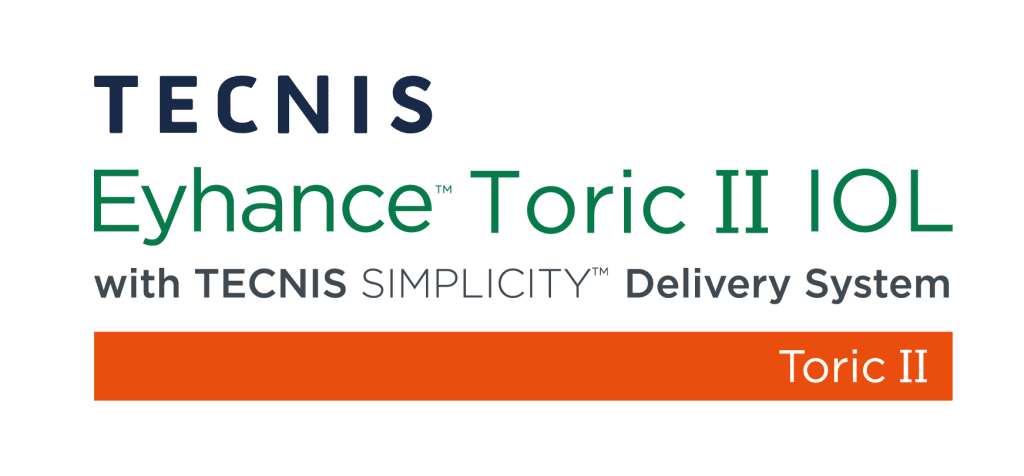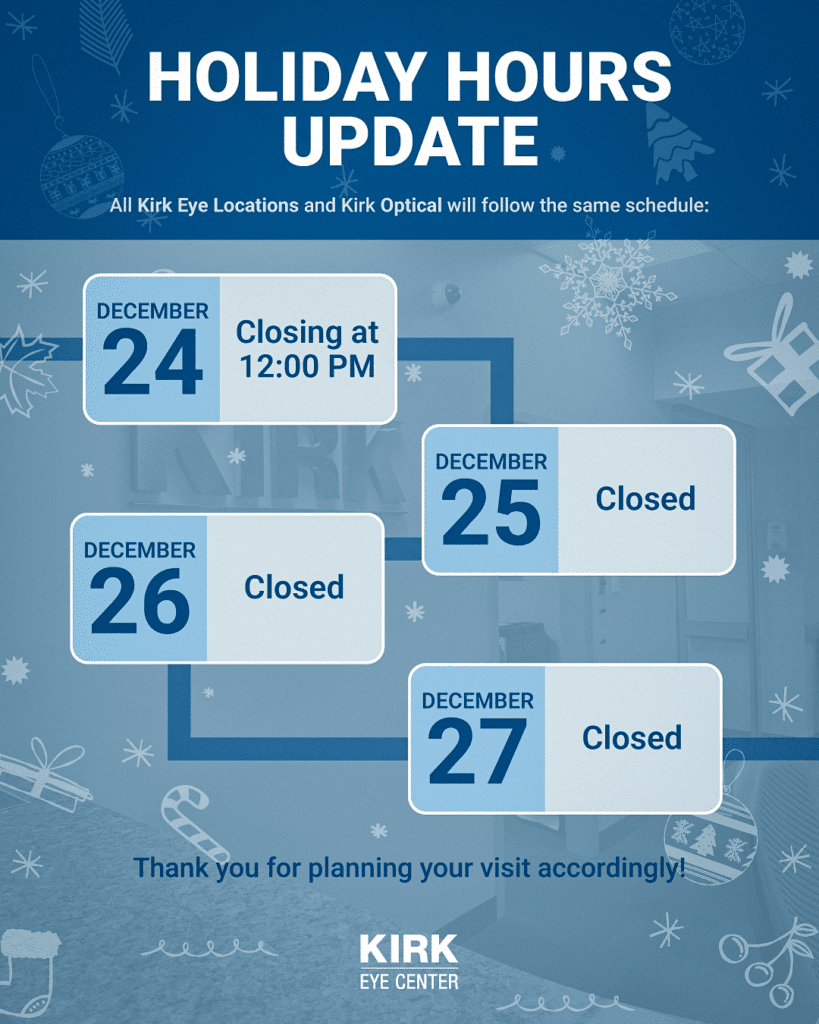
Lens Implant Options
Modern cataract surgery offers more than just cloudy lens removal. It’s an opportunity to achieve your best vision possible.
Premium intraocular lenses represent the latest breakthrough in vision correction technology, designed to address multiple vision problems simultaneously.
What Is An IOL?
An intraocular lens (IOL) is an artificial lens used during surgery to replace the natural lens of the eye. In the past, IOLs were primarily used in cataract surgery to improve vision.
However, modern IOLs utilize recent advancements in medical technology to correct a more comprehensive array of vision problems. Premium IOLs offer a crisp field of vision at various distances, eliminating the need for glasses or contacts.
Compared to conventional IOLs, premium intraocular lenses provide a number of advantages, such as:
When choosing an IOL, patient needs, budget, and lifestyle all play an important part in making this permanent decision. Your eye care professional will work with you to determine the best option based on your individual circumstances and visual goals.
How Does An IOL Work?
IOLs function similarly to the natural lens of your eye. They focus on the light entering your eyes through the corneas and pupils onto the retinas.
The majority of IOLs are made of highly flexible materials, and they are about a third of a dime’s size. Like prescription glasses, IOLs have specific prescriptions that give you the best possible vision.
IOLs are most commonly used in cataract surgeries, significantly improving refractive disorders such as severe hyperopia, presbyopia, and astigmatism in the process.
Types of IOLs
Traditionally, the majority of IOLs were monofocal, meaning they were designed to correct vision at only one distance: far, intermediate, or near. This meant that following cataract surgery, most patients still needed glasses to see clearly at all distances.
Monofocal lenses remain a good option for many patients, but modern advances in lens technology have made it possible to see clearly at a wide range of distances without the need for glasses or contacts. Although this is a great advancement in technology, most insurances do not see this service as medically necessary and may result in an out-of-pocket cost to patients.
There are a variety of premium intraocular lenses that can drastically improve the quality of your vision compared with traditional monofocal IOLs, including:
Toric IOLs
Although Toric IOLs are monofocal, they are considered premium because they can also correct for astigmatism. Until recently, if you had astigmatism and underwent cataract surgery, you had no IOL options that could address your astigmatism.
Toric IOLs are monofocal lenses that are convex on both sides. This double-convex design allows them to correct astigmatism, nearsightedness, or farsightedness as well as eliminate the cloudy vision caused by cataracts.
Multifocal IOLs
Premium multifocal IOLs expand your range of vision by providing magnification in various areas of the lens. By diffracting light through multiple focal zones, multifocal IOLs allow you to see clearly at a variety of distances without needing glasses or contacts.
What Are the Benefits of Premium IOLs?
Premium intraocular lenses offer a range of benefits that significantly enhance vision quality for individuals undergoing cataract surgery. These advanced lenses address various vision issues and offer a more comprehensive solution compared to traditional single-focus IOLs. Benefits include:
Premium IOL Options at Kirk Eye Center

TECNIS® Eyhance™ Toric II IOLs
The TECNIS Eyhance Toric II is an advanced monofocal lens specifically designed for patients who have both cataracts and astigmatism. Unlike standard monofocal lenses, this lens has a unique shape that provides better depth of focus and improved vision in low-light situations.
This lens is ideal for patients who want to correct both their cataracts and astigmatism during a single surgery. The Eyhance Toric II focuses on providing excellent distance vision while addressing the blurred or distorted vision that astigmatism causes.
Patients can expect clearer, sharper distance vision for activities like driving, watching movies, or attending meetings, even in dimly lit environments.
TECNIS® Odyssey™ IOL
The TECNIS Odyssey is a presbyopia-correcting intraocular lens designed for patients who want to address both cataracts and presbyopia in a single procedure. This advanced lens provides continuous vision at all distances, allowing patients to see clearly from far to near without the gaps typically found in traditional multifocal lenses.
The Odyssey IOL features a unique design that minimizes common visual side effects like halos and glare, particularly during nighttime activities. This lens is ideal for patients who want to reduce their dependence on glasses for activities like reading, using digital devices, driving, and other daily tasks.
The TECNIS Odyssey focuses on providing a full range of clear, comfortable vision while maintaining excellent image quality in various lighting situations.


Light Adjustable Lens
The Light Adjustable Lens (LAL) is a revolutionary intraocular lens made with special photosensitive silicone material that can be customized to your exact visual needs after cataract surgery. Unlike traditional IOLs that are permanently set during surgery, the LAL allows for precise adjustments once your eyes have fully healed.
This unique approach lets you and your surgeon evaluate your real-world vision and make fine-tuned adjustments until your desired visual outcome is achieved, whether you prioritize distance vision, computer work, or reading.
Which IOL Should I Choose?
With so many IOL options, it can be confusing when trying to choose the best artificial lens for your specific needs, budget and lifestyle. Unlike glasses, you can’t simply try on an IOL and see which one you like best.
Our experienced ophthalmologists will take the time to carefully examine the state of your ocular health, listen to your goals, answer your questions and carefully explain all of your options. Our goal is to help guide you toward an IOL choice that will meet your needs and provide you with clear vision for years to come.
Choosing an intraocular lens depends on a variety of personal factors, such as:
Fortunately, you don’t have to make this important decision alone. The knowledgeable eye doctors at Kirk Eye Center will help you every step of the way.

Monofocal
With the standard single focus artificial lens implant (monofocal), you can select which of the four zones you want to see without wearing glasses. You must wear glasses if you want to see any of the other zones.

Bifocal
Bifocal lens implants (multifocal) are designed to produce a dual focus, meaning they can focus on more than one distance. With a bifocal lens implant, part of the lens is set for distance focus (zone 1) while part of the lens is then set for reading distance (zone 4). Having bifocal lens implants can significantly reduce your dependence on reading glasses.

Extended Focus
Extended focus lens implants provide continuous focus over a range of distances. This lens implant is a good option for patients that want good natural focus without glasses when outdoors and indoors distances, as well as at mid-range distances, like zones 1, 2, and 3.

Toric
If the shape of the cornea is imperfect, it creates a natural blur or misfocus called astigmatism. Astigmatism is a refractive error that causes blurry vision. For patients with astigmatism, astigmatism correction can be put into the lens implant instead. This is something easily incorporated into each of the three lens implant categories. Any lens containing astigmatism correction is called a toric lens.

Light Adjustable Lens
The Light Adjustable Lens is a groundbreaking advancement in cataract surgery that offers outstanding flexibility and precision in vision correction. Unlike traditional intraocular lenses (IOLs), this innovative technology allows ophthalmologists to fine-tune the lens power post-operatively using non-invasive light treatments.
Premium Lens Cost
There are a variety of premium IOL options, and prices vary from lens to lens and patient to patient, depending on your unique needs. During your consultation, you will be provided with an estimate on what you can expect to pay based on the lens and procedure you choose.
Although insurance will usually cover the cost of cataract surgery itself, premium lenses are not covered because they are not considered a medical necessity. Any upgrade to a premium lens or advanced laser cataract surgery is the responsibility of the patient. The staff at Kirk Eye Center will review all billing information and financing options with you prior to your surgery.
Frequently Asked Questions
Ready to Explore Your IOL Options?
To begin your journey toward crisp, clear vision, schedule an appointment at Kirk Eye Center in one of our conveniently located offices throughout the Chicago area.


